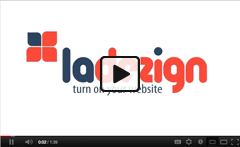Traffic Tuesdays
Words Blog 35: Types of Requirements

The Web is full of commercial websites. Many fail to deliver the results that business owner wants or expects. Often that is because the business owner or person directing web development failed to provide a clearly written and complete description of what they expected on their website.
They needed a set of requirements that communicated exactly what business goals the website was required to meet, who they wanted to draw to the website and what they wanted guests to do once they landed on the site.
Website requirements identify specifically
• How your website will look
• What type of visitors you want to attract to the site
• What type of content will appear there
• How your website will work.
In short, website requirements define, in tangible terms, the specific content, features, functions and capabilities a website must have.
Starting to write your requirements can seem like a daunting task! You probably have a clear idea in general terms what you want from the website. Beyond that, you may be challenged when you try to visualize the elements and describe how those general ideas would look and feel.
Begin by thinking about three key aspects of the website:
1. The business requirements the website must meet
2. The User/Visitor requirements
3. The Functions the website must provide
Business Requirements. You have business goals that you want to achieve with your website. These goals could be as simple as letting members of your community know about your business and getting them to come to your restaurant, store, fitness center, event or spa.
Most businesses these days expect more from their websites than this. Even local businesses usually want visitors to do more these days. For example, sign up for newsletters, follow them on Facebook and other social media, complete a survey or join a mailing list.
All these goals need to be spelled out in your business requirements. It's always a good idea to visit other websites, including those of your competitors, to see what they are doing and whether you want to do something similar.
User Requirements. Believe it or not, many people forget to think about who their visitors are going to be and what features will be most appealing to them!
Begin these requirements by identifying specifically who your customers are. You may expect the website to be a tool that expands your reach in your market by attracting a new type of customer to your business. Be very clear about the characteristics of your existing customers and the new market segment you want to reach.
Consider what content and key words appeal to them. Consider the image your business must project to draw them to your business. In some cases, the expectations of your current customers and the new audience may be somewhat different. Think about what features or interests the groups share and how your website can appeal to both.
Functional Requirements. Functional requirements describe how your website will work. On one level, that includes deciding whether you want calendar, search, sign-up and other features on your website. Be specific about how you want each feature to work so the people developing your website can get it right.
Functional features also relate to the type of content you will have on the website. Will you have audio, video, still graphics or photos? How much text will you have on various pages? How frequently will content, graphics, videos and other content be updated? Who will do the updating?
If you are displaying products online, how will those pages look and work? What type of content will they include? Will each product have its own page? How many pictures will be required?
This brief description merely touches the top layer of the type of functions you might have on your website. These days, for example, web sites are usually designed to take advantage of search engine optimization (SEO). That decision imposes certain additional requirements on the site.
Clearly, developing requirements should be a thoughtful and challenging process. In the case of website development or revision, however, it is a question of "pay me now or pay me later."
Time invested in defining requirements and making sure your developer and programmer understand them can reduce the time required to design and develop the website. It also means your website is likely to achieve your goals and objectives for it.
Stay turned to future posts for further ideas about how to develop and use requirements.
Please share your ideas, comments, questions and suggestions about this blog with us. Feel free to leave comments below or to email Judy at [email protected].
Judy Cobb is an independent writer and business writing coach whose clients have included Parsons Engineering, Mattel Toys, The Los Angeles Times and the Jet Propulsion Laboratory. She has specialized in developing training materials for instructor-led courses as well as interactive online courses and websites. She holds advanced degrees from Columbia University and Stanford as well as an MBA from UCLA's Anderson Graduate School of Management.
P.S. Don't forget to subscribe below to this blog.
 About Jason Ciment
About Jason CimentFormerly an attorney and CPA, Jason has been working online since 1997. His columns on affiliate marketing can still be found on www.Clickz.com and his book on search engine optimization can be found at www.seotimetable.com.
This blog is published 4x per week and covers website design and SEO tips as well as a wide range of tips and advice for working and living online more efficiently and enjoyably.
-
Latest Blog Posts
- How to Evaluate Google Adwords Performance
- A study of RyanAir shows how SEO results are affected by 404 errors
- Averting Stock Market Freefall. A study on CSOD
- Words Blog 45: Auditing Your Website
- Words Blog 44: Know What's on Your Website Seo Resources
- What is SEO?
- Frequent SEO questions
- Optimization checklist
- Why we're good at SEO
- Web design tips Seo Case Studies
- AbsoluteMed.com
- ArtisanPrecast.com
- GrandpasCoffeeCakes.com








